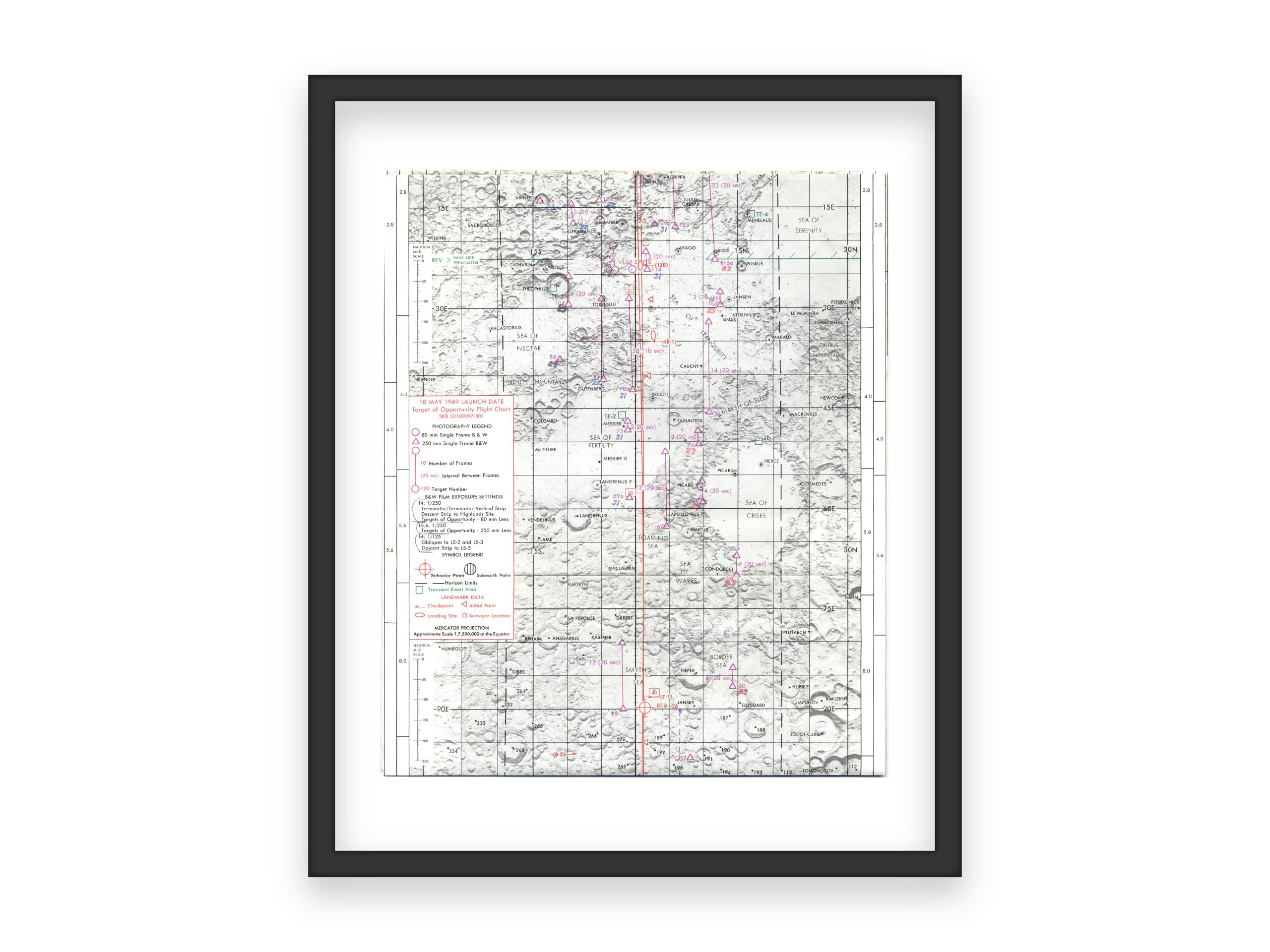Mapping the Moon: The 1969 Lunar Chart That Guided Humanity’s Greatest Journey

This 1969 lunar target map is no ordinary piece of cartography—it’s a historic roadmap to another world. Used during a time when humanity dared to take its first steps off our planet, this chart helped guide the Apollo missions toward precise lunar landmarks. More than a collection of lines and coordinates, it represented the vision, courage, and meticulous planning required to transform the impossible into reality.
Charting the Unknown
As the Space Race accelerated, engineers, scientists, and astronauts collaborated to create tools that would unlock the Moon’s secrets. Every dot, label, and boundary line on this chart carried vital data, enabling mission planners to predict safe landing zones, navigate treacherous lunar terrain, and photograph the Moon’s surface. In a pre-digital era, these painstakingly prepared maps were indispensable guides, helping our explorers find their way through an alien landscape bathed in sunlight and shadow.
Bridging Heaven and Earth
Printed on Earth but designed for use in the vacuum of space, this chart symbolizes the blending of earthly knowledge with cosmic aspirations. Each coordinate was calculated with extraordinary precision, reflecting humanity’s drive to transcend boundaries and push beyond the known.
A Legacy of Exploration
While advanced satellite imagery and digital navigation now guide our spacecraft, these analog-era charts remain monuments to a timeless human trait: our desire to explore. They remind us that what once seemed distant and unattainable can become familiar and charted, given determination and ingenuity. A glance at this 1969 lunar target map reconnects us with that defining moment when humans dared to transform a distant, glowing disc in the night sky into a tangible destination.
Did You Know?
• Early lunar charts were compiled using telescopic observations and photographic surveys, long before robotic probes collected detailed data.
• The Apollo missions relied on meticulous navigation aids like this map to ensure safe landings on the Moon’s surface.
• These charts combined the best of human intelligence and creativity, functioning as essential tools at the dawn of interplanetary travel.
This remarkable lunar chart is more than a scientific document; it’s a cultural artifact—a testament to our ability to imagine, prepare, and ultimately achieve what many once believed impossible.

